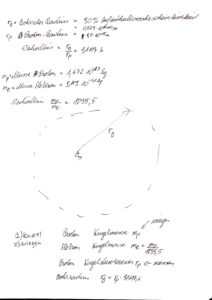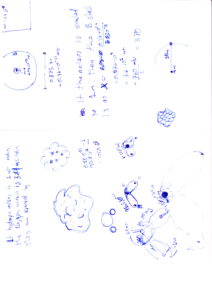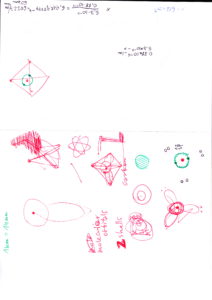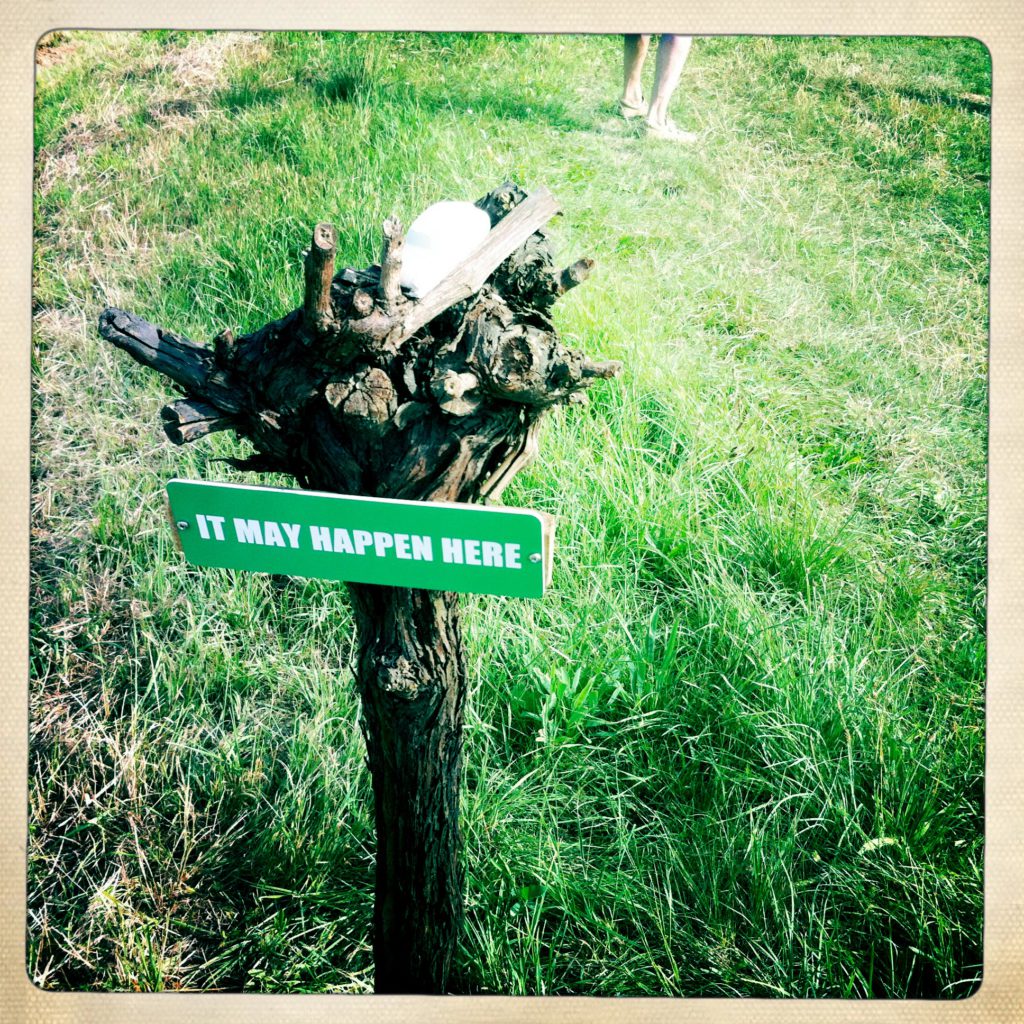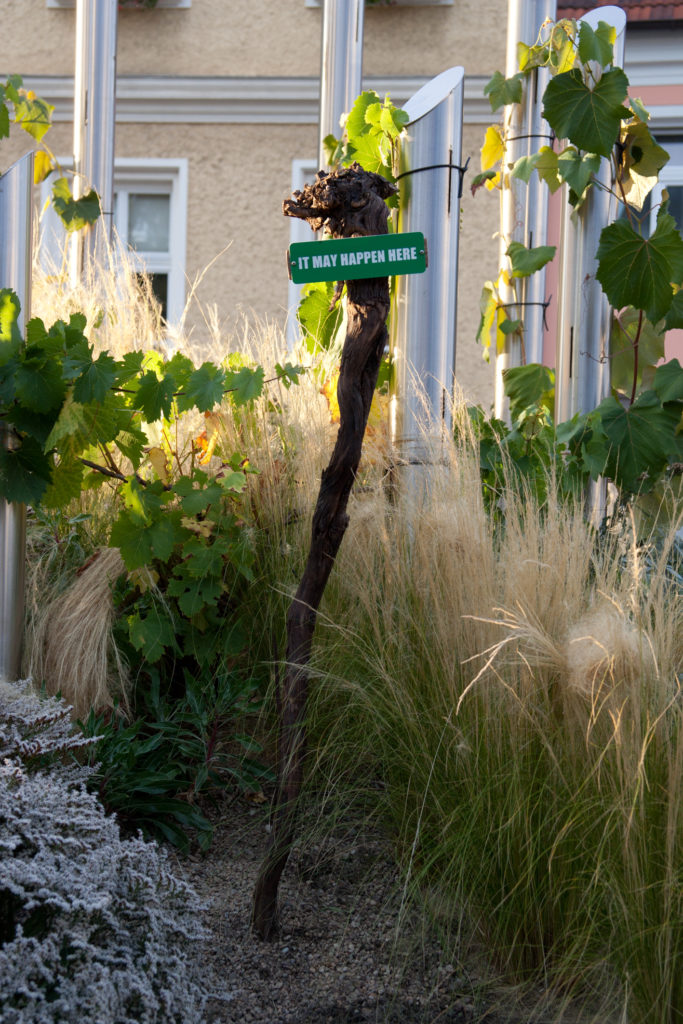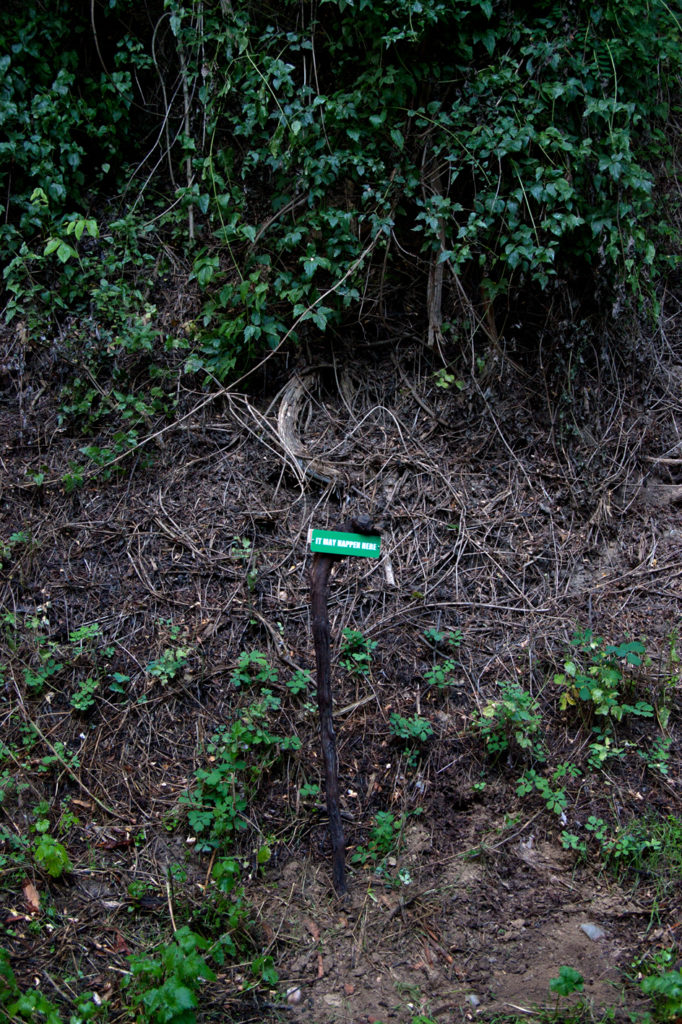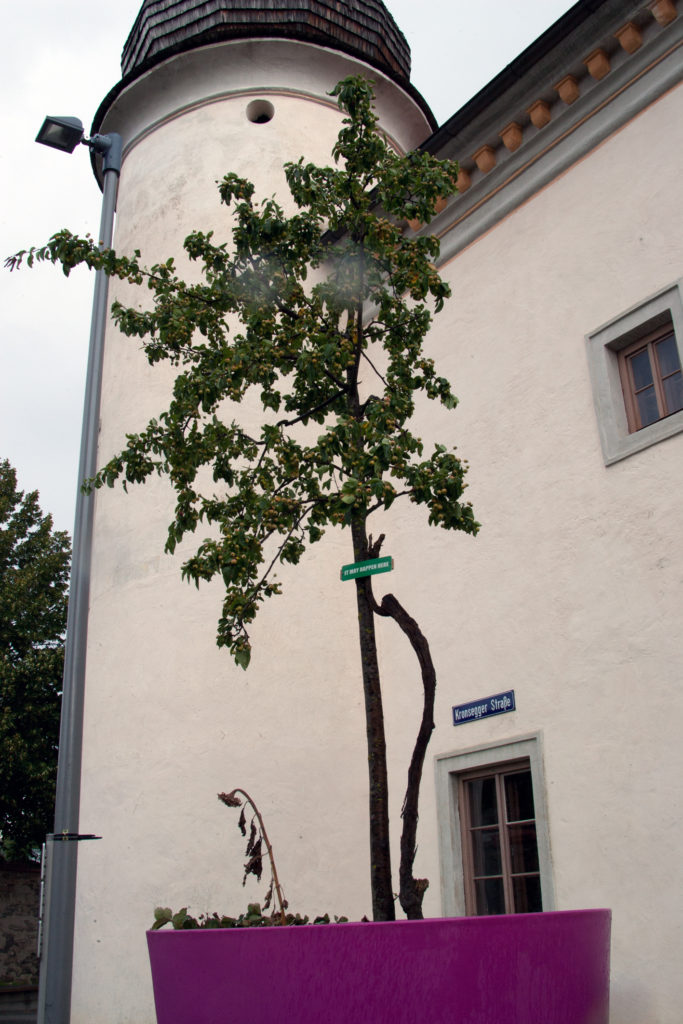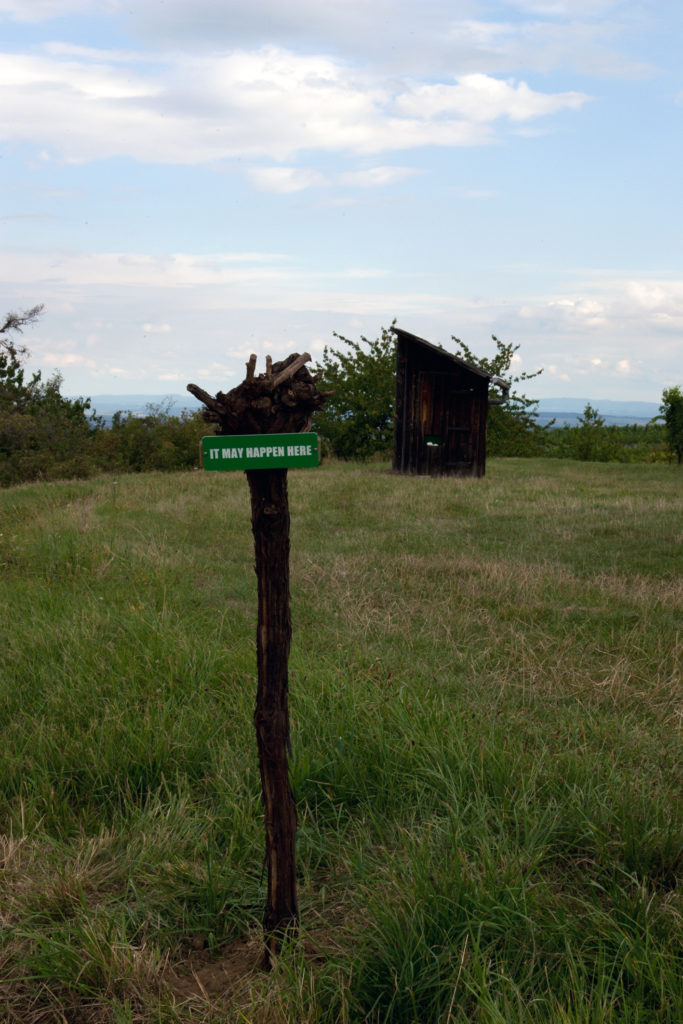Evolution
Title: between space & consciousness, potential & texture…
Concept:
Since once I heard the story ‚if you‘d think of an atom and take his nucleus as big as a corn of peas, then the distances to his electrons would be as big as a football field…‘, gave me no peace and made me research upon this subject.
The deeper into research the more abstract became the matter.
The whole issue has been worked on already since ancient Greece, when over 2000 years ago Democritus formuled the view that the world is build from undivideable parts (atomos), which have certain size and exist in space. This theory ruled until the modern age, or until quantum mechanics were discovered. At the beginning the quantum mechanics described an atom as positively loaded with electrons inside of it, than as positively loaded nucleus with electrons spinning around it. (From this period comes the model of Bohr, which is still being taught or used for simplified, conventional calculations.)
But when the quantum mechanics noticed an unexplainable phenomena, that electrons constantly change their orbitals, and when electron showed his wave-like aspect of existance, than IT WAS NOT POSSIBLE TO INTRODUCE REALITY AS OBJECTIVE AND INDEPENDENT FROM THE OBSERVER anymore.
Ha! By knowing all of that and being inspired by materia built of space I asked three scientists to help me out with counting the distances between the nucleus and electrons..
but the task as soon as it was about any other atom than hydrogen things got very complicated and more and more conditions were to be fullfilled and in the end everybody came out with different results. The main question was, according to which system should it be measured? This was almost a kind of philosophical approach – are we still in the Bohr model or quantum mechanics? The only atom which didn‘t leave too many questioned open and could be measured in an uncomplicated way in all systems, was hydrogen atom.
‚An atomic orbital is a mathematical function that describes the wave-like behaviour of either one elec- tron or a pair of electrons in an atom. This function can be used to calculate the probability of finding any electron of an atom in any specific region around the atom‘s nucleus. The term may also refer to the phy- sical region defined by the function where the electron is likely to be.‘ (Wikipedia)
So we came up with a result that if we have a distance of radius 5 km, which is from the Milkhouse in Reith to Holzplatz in Langenlois (air line) – the radius of nucleus should be 20 cm (placed in Reith). Then the only electron in our hydrogen atom would have the potential to manifest itself as a point in space any time any place in the area of this 5 km radius.
It is like a cloud of possibilities….
IT MAY HAPPEN HERE….
First of all the aim was to realize how distant from each other are parts of an atom, but going one step ahead is contemplation of space & emptiness. Where emptiness should not be understood in common way with nihilistic connotation, but taken from sanskrit as ‚sinujata‘, where ‚sin‘ means full of possibili- ties. Full of possibilies to happen, to change and develop.
That is how to understand that all things in their essence are empty, that they have no own indepen- dent existance and they appear codependent with awarness experiencing them.
Space becomes unlimited containing all appearing in it phenomenas and the process of happenning aswell. It‘s all one.
Technic: mixed-media Installation, work on location
M21 aka Museum Of The Twenty-First Century is featuring ten of the sweetest cutting-edge visual artists from all over the world.
Artists: Kama Sokolnicka, Bill Conger, Iv Toshain, Katrín I. Jónsdóttir Hjördísardóttir, Anka Nidzgorska, Dave de Leeuw, Lena Lapschina, Judith Rohrmoser, Magda Pelmus, Jen Blazina.
Opening & party: August 14, 3 p.m. Venue: Langenlois, Lower Austria. DJ set: Alois Huber (Laton).
FREE BUS SHUTTLE FROM VIENNA TO LANGENLOIS! http://www.facebook.com/M21evolution
GPS: 48.48881 N 15.66187 E
Dimensions: an old Milkhouse in a Village Reith as a white cube and 15 objects placed accidentally in

